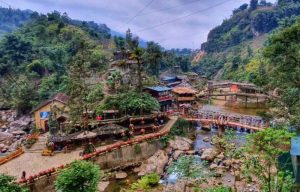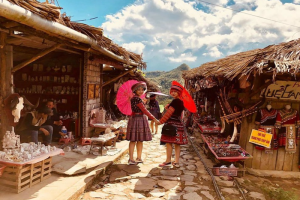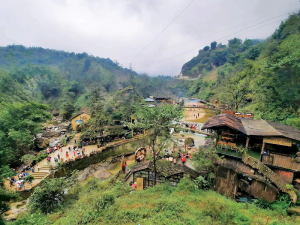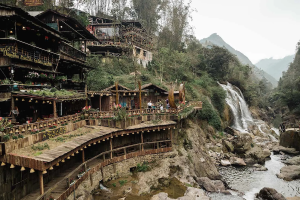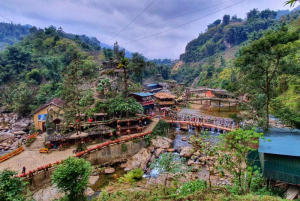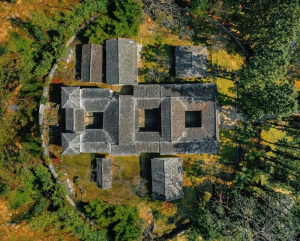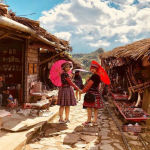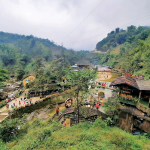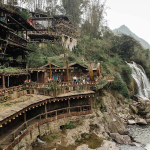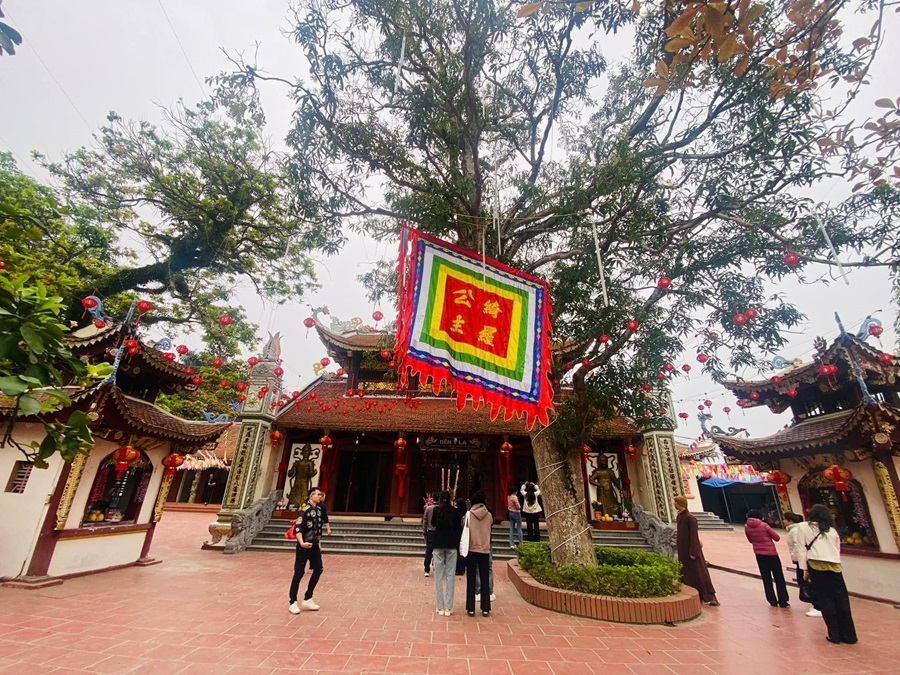
The Y La Temple is an old temple that has historical, cultural, and architectural value. For many centuries, Tuyen Quang people have also used it for religious purposes. The temple is now a well-known spiritual tourism spot where people from all around gather to pray for peace.
What is Y La Temple and where is it located?
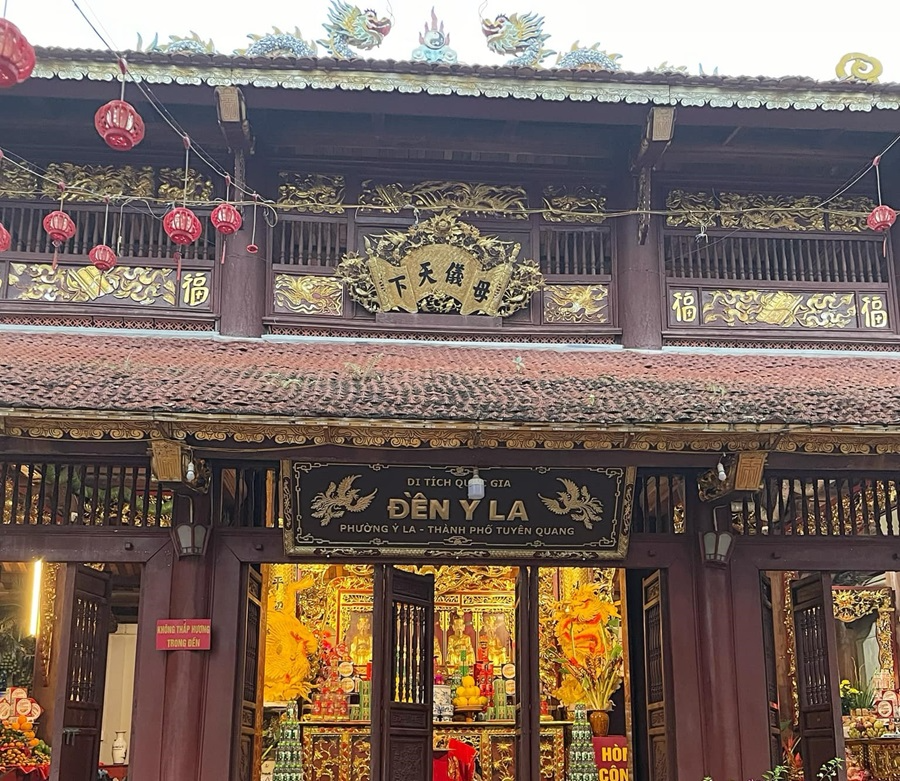
The Y La Temple in Y La Ward, Tuyen Quang City, was established in 1738 during the reign of King Canh Hung. It is dedicated to Princess Phuong Dung, the daughter of King Hung. The temple is said to have many miracles; hence, Princess Phuong Dung has been known as the Holy Mother from ancient times. People from all over the world come to Tuyen Quang City every year in the middle of February and July of the lunar calendar to see the Mother’s palanquin procession, which is a grand event.
Historical Significance of Y La Temple
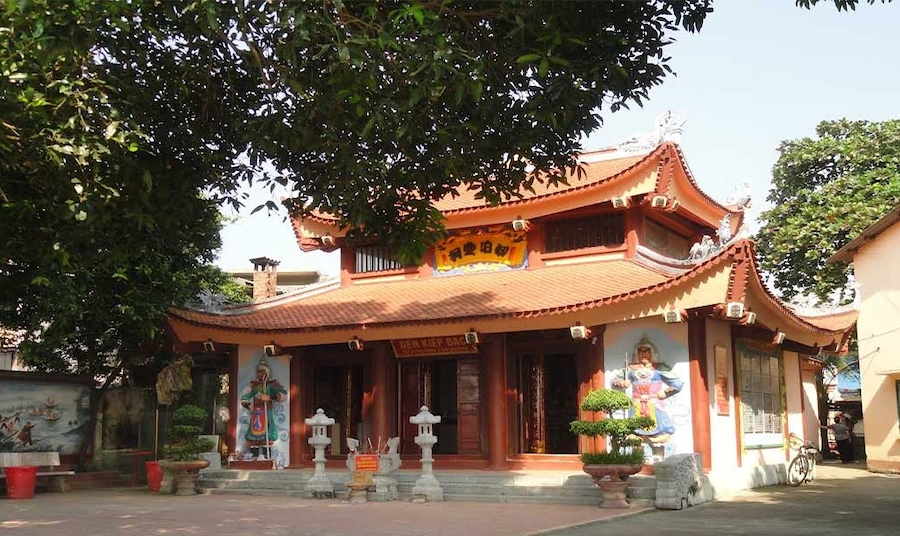
In Vietnam, Y La Temple is crucial to both culture and religion, especially when it comes to the Mother Goddess worship. It is one of the five most important relics in Tuyen Quang and is essential for keeping the area’s historical and spiritual character.
Y La Temple is an old building that shows off Vietnam’s rich history and culture. It is a sign of long-standing customs, especially those related to the worship of the Mother Goddess. The temple is a symbol of the residents’ spiritual and cultural identity. It provides us a look at the traditional Vietnamese beliefs and rituals that have been passed down from generation to generation.
The design and building of Y La Temple display several architectural styles that are part of Tuyen Quang’s cultural heritage. Its restored structure helps people learn more about religion and regional craftsmanship.
Y La Temple is a holy spot where people can worship, especially those who follow the Mother Goddess faith. It is still a religious center where people come together for ceremonies and spiritual pursuits.
Y La Temple is a popular tourist destination for people who are keen to learn more about Vietnamese history, culture, and religion. It has a spiritual atmosphere and is also beneficial for tourists seeking to learn.
Along with Ha Temple and Thuong Temple, Y La Temple is also part of a spiritual network in Tuyen Quang. These places together make up a big cultural complex that is known for how they have helped local traditions and religious life.
Architecture and sacred features of Y La Temple
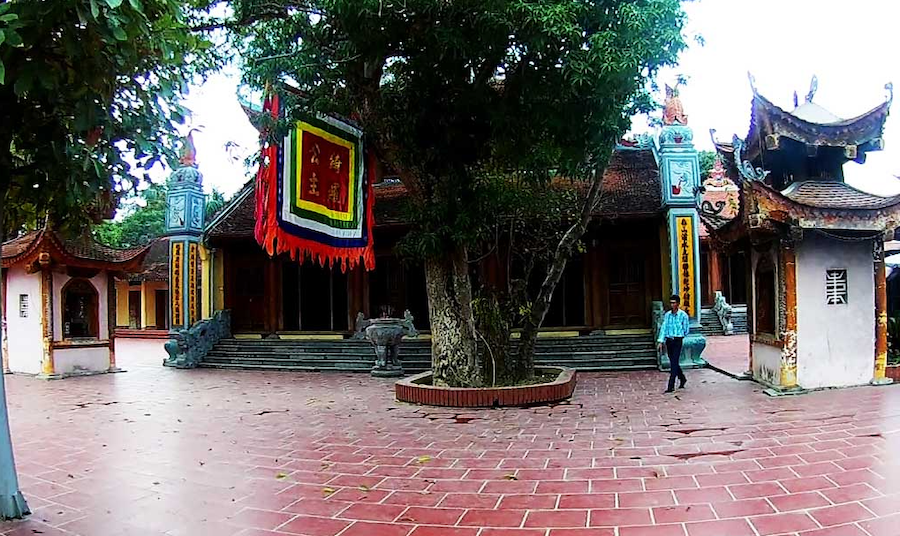
Y La Temple is noted for its holy atmosphere and unique design, especially because it is linked to the worship of the Mother Goddess and the big celebration that includes the Lower Temple, Upper Temple, and Ỷ La Temple. It is a national historical and cultural relic, along with these two other temples, and it adds to the region’s spiritual and cultural identity as a whole.
The temple is on top of a hill, which makes for a calm and high place to pray. The main building sits on top of the hill, while the arched entrance gate is at the bottom, guiding people up. This layout not only improves the temple look, but it also follows traditional architectural planning.
People say that the Kinh Thien Palace of the Thang Long Imperial Citadel inspired its design, which imparts it an appearance of historical grandeur. The proportions and arrangement of the temple show this influence, which connects it symbolically to the history of Vietnamese royal architecture.
There is a tiny natural spring near the entrance to the temple that some think brings positive luck and peace. Two square bronze pillars stand on either side of this area, representing a symbolic entrance for tourists and believers.
Traditional designs like phoenixes, cloud patterns, and a unicorn decorate the three-arch entrance gate in a stunning way. These symbolic pictures represent benefits, purity, and protection, which add to the temple’s holy nature.
The temple has 39 imperial edicts from the Lê and Nguyễn dynasties that are still in excellent shape. These papers, given to Cao Sơn, come with parallel text plaques and are valuable historical artifacts that show how the temple has been venerated for hundreds of years.
Y La Temple is essential to the practice of Mother Goddess worship, which is an important part of Vietnamese spiritual life. It is still a place where rites and offerings are made on a regular basis, attracting both locals and pilgrims.
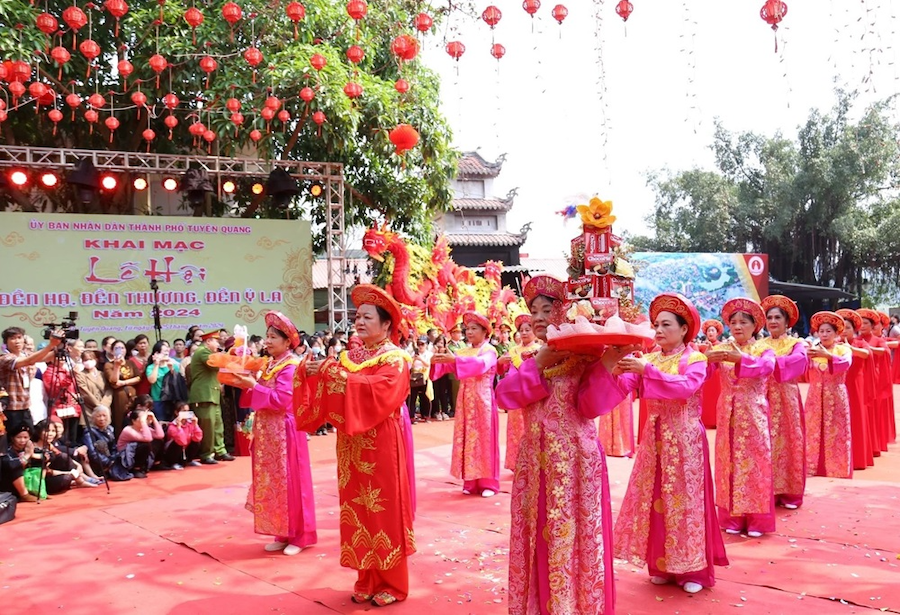
The temple is very much a part of the celebrations that happen in the Lower and Upper Temples. These festivals are part of a big ceremonial tradition in the area that honors the Mother Goddess’s heavenly presence.
These festivals have been classified as part of the country’s intangible cultural heritage. They are lively, community-centered events that show off the region’s values, beliefs, and artistic traditions.
People also see the temple as a spiritual home for the Mother Goddess, a symbolic place of safety and tranquility. Because of this idea, it plays a special part in the rituals that take place during festivals and other spiritual celebrations.
People consider Y La Temple not only as a historical site but also as a place to live that keeps good values alive. It still honors the Mother Goddess and promotes the cultural legacy of Tuyên Quang through its religious ceremonies and colorful festivals.
Read more: Ghenh Che Lake: A picturesque scenic spot of Thai Nguyen province
How to get to Y La Temple

There are two main ways to access Y La Temple in Tuyen Quang: one from the core of Tuyen Quang City and the other from nearby regions. The temple is in Tuyen Quang Province’s Y La Ward, which makes it easy to find.
You can drive or ride a motorcycle south along Nguyen Trai Street (QL2) if you’re starting from the city center. After that, turn right into Nguyen Du Street and go straight until you get to the temple.
You may also easily get a taxi or a motorbike in Tuyen Quang. Usually, just saying “Y La Temple, Y La Ward” to the driver will be enough, since the area is well-known to residents. You can take a passenger bus to Tuyen Quang if you’re coming from other provinces or cities. You may easily go to the temple by taxi or motorbike taxi after you get at the city’s bus station.
If you’re driving your own car, a map or navigation app will help you locate the way quickly and easily. Because the temple sits in the middle of town, getting there is usually easy.
It’s usually easy to find the temple because it’s in a busy location. But on holidays or during festivals, it’s a beneficial idea to check the traffic ahead of time and think about taking public transportation to avoid traffic jams or local rules.
Because Y La Temple is an important spiritual location, guests are asked to dress appropriately, keep the peace, and be nice while they are there.
Read more: Mu Cang Chai or Sapa: Decide based on your travel style
What to expect when visiting Y La Temple
When you go to Y La Temple, you should anticipate encountering a place of devotion that focuses on Tran Vu, the Taoist god of the North, as well as other spirits of your ancestors.
- Architectural Features: Y La Temple, or Quan Thanh Temple, is a historic landmark in Hanoi. It has detailed carvings and statues, especially of dragons and phoenixes, which are common in Vietnamese and Taoist culture.
- Worship Areas: The temple usually contains a primary worship space (San Bai) where people can leave incense, fruit, flowers, and sometimes food. There is also a more holy inner sanctuary (Hau Cung) where some think the spiritual energy is strongest. This room is normally dark and only used for certain ceremonies.
- Gods and Spirits: The temple is devoted to Tran Vu, the Taoist god of the North. It may also have altars for other gods and spirits of ancestors.
- Spiritual attitude: The inner sanctuary is meant to make you feel like you’re in the presence of God, so expect a calm and respectful attitude.
- Cultural Importance: Y La Temple is a site where spiritual beliefs and cultural practices come together. It shows how the people in the area worship and how they connect with nature and the almighty.
- Temple Etiquette: Dress appropriately, don’t make loud noises, and remember that the shrine is a sacred environment. If the temple or local guides give you particular instructions, follow them.
Y La Temple is a great place to visit if you’re interested in Vietnamese culture and religion because of its historical importance, spiritual ambiance, and easy access. This temple is a unique and fascinating spot to visit, whether you’re learning about the area’s history or just searching for a quiet place to think. Don’t be afraid to get in touch with Lily’s Travel to create a pleasant and well-organized trip to see the cultural treasures of Tuyen Quang.




